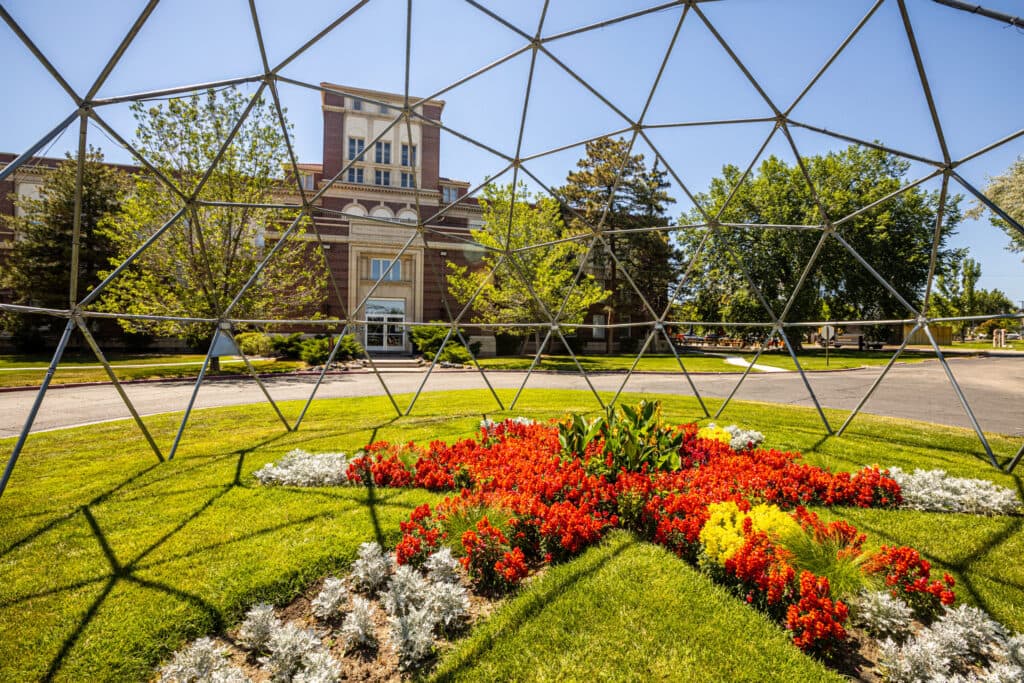Green is more than a color in the art world, it’s also representative of environmental practices. We are highlighting ways for artists to incorporate sustainable methods in their art projects. Remember, even the smallest action can make a world of difference.
Re-imagine materials
Before you run to the store, look at the objects around you. Is there an opportunity to use an item you already have in your home or studio? This includes taking a look in your trash or recycle bin. “Re-imagining materials is important when looking at common items that we take for granted and may only use for a few moments before tossing them into the trash,” said Associate Professor Regan Rosburg. From trash to treasure, she recommends using items like an old window as a new exciting canvas, plastic water bottles as molds, used wrapping paper as colorful backgrounds, or even Valentine’s day flowers for a pressed collage.
Re-source supplies
If you don’t have the art materials you need at home, we recommend re-sourcing gently used supplies. ReCreative Denver is a favorite when it comes to finding paints, yarn, markers, colored pencils or canvases. This shop, located in Denver’s Santa Fe Art District, has a mission to divert materials destined for landfills by collecting and re-distributing supplies to be used for art and education. If you are interested in donating any of your leftover supplies, check out their Materials Donation page for more information.
Shop second hand
Don’t forget to check out your local thrift stores! For our fashion design students, this is a great way to repurpose fabrics or clothing for new projects. To learn more about sustainable fashion at RMCAD, check out our blog, RMCAD Professor Inspires the Future of Sustainable Fashion. The Habitat for Humanity Restore can also be a great place for interior design students to shop for their next home improvement, renovation or DIY project.
Recycle old work
As an artist, it’s not uncommon to have a few older art projects lying around. What if you took these older pieces and recreated them? Whether it’s painting over an existing canvas or deconstructing a piece to reuse the materials, it allows you to bring a second life to projects. You can also use this opportunity to expand on an original idea and build onto a design. Associate Professor Rosburg has been incorporating this into her own practice by turning entire installations into newly imagined masterpieces. Check it out in her projects Omega and Monument!
Incorporate natural materials and processes
Another way to keep your projects more sustainable is to learn more about the materials you are using and their impacts on the environment, both in the short and long term. Fabric is one resource known to vary environmentally based on the type of material. According to Eco- Stylist, “a couple of the major determining factors when labeling sustainable materials are the amount of resources used to produce it and the life cycle analysis of the product.” When it comes to painting, Associate Professor Rosburg has switched from making heavy layered resin paintings to lighter, more simple oil paintings to help reduce the weight and complex packing/shipping. Making lighter, more easily shippable work can save on the costs of transportation and reduce fossil fuels.
Research proper disposal
For any art supplies or materials that may be deemed as hazardous or toxic waste, be sure to do your research in your local area to learn the proper steps for disposing. For paint specifically in Denver, check out these free local paint-drop off locations.
These ideas are just the start for a more sustainable, artistic future! We challenge you to add just one sustainable practice into your next art project.

